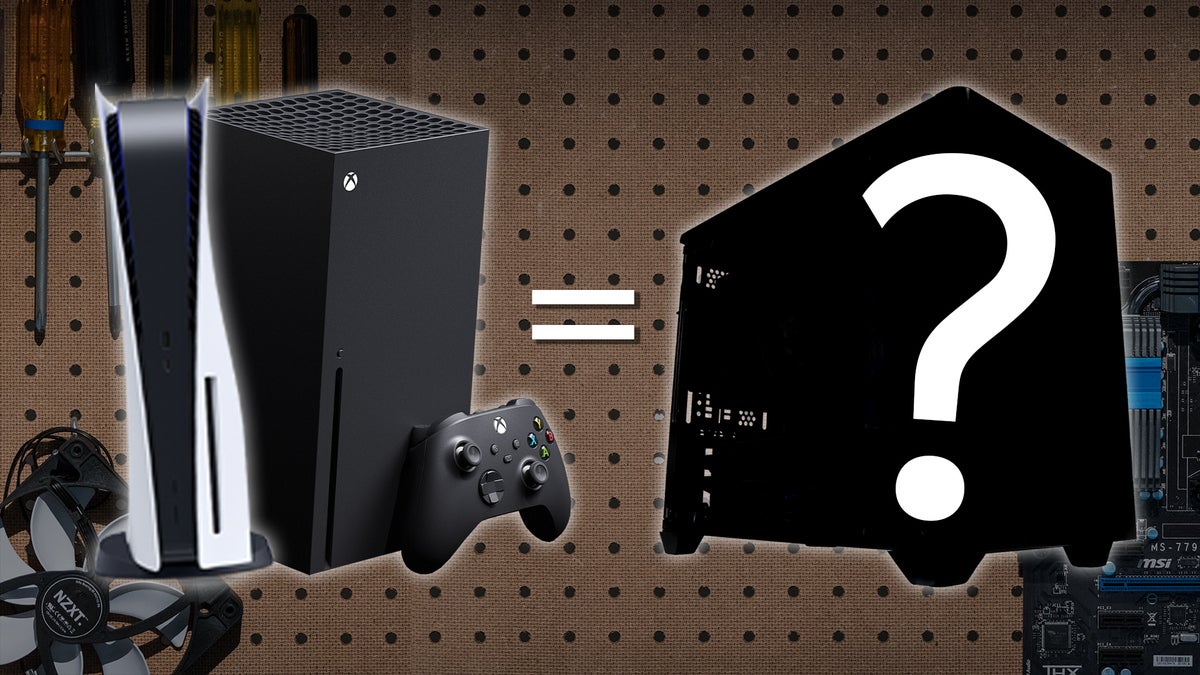[ad_1]
Q: Why can’t we have an APU for DIY PCs that rival those in the Xbox Series X and the PS5? If bandwidth is the problem, AMD can just put more memory in there, right?
A: Unfortunately, an equivalent APU to those in powerful gaming consoles doesn’t make sense for desktop PCs, for a few reasons.
We’ll use the ones in the Xbox Series X and PlayStation 5 as the example. As designed, their combination CPU/GPU processors utilize GDDR6 memory for handling both system tasks and gaming. And that type of memory is what causes one sticking point: GDDR6 memory is most commonly found in GPUs, and not used in standard PC builds for system memory.
So if GDDR6 were to remain on the package as it does now in those custom APUs, AMD would have to redesign the whole motherboard to make use of soldered-on memory—a move likely to trigger harsh words from the PC building community, which values the openness of how DIY PC parts work together.
AMD could instead redesign those custom console APUs to work with standard PC components, but either way, its engineers would invest considerable work into such a project, likely far more than would justify the amount of time spent. Production costs would also likely be too high for a standalone APU to remain affordable, too, since we doubt enough buyers would exist for the economies of scale to kick in.
In contrast, Microsoft and Sony purchase APUs for their consoles in massive quantities. Even given 2020’s production delays and shortages, each company has already sold millions of their new consoles. Which brings us to the final reason that would prevent the APU of your dreams: AMD wouldn’t want to upset its partners by coming out with a competing part for its DIY audience. The APUs created are done in partnership with each company, after all.
 Adam Patrick Murray / IDG
Adam Patrick Murray / IDGCreate a true PC equivalent of a console is tricky, as we outline in our article exploring the kinds of parts we’d put in such a build. Actually creating the exact DIY PC equivalent of a console APU would be even trickier.
My colleagues and I always like interesting hardware, though, and the option of a high-powered APU would be exciting. Modern graphics cards keep getting more expensive—GPUs that used to be in the $200 to $250 range now start at around $330. An APU with the graphics power of a GTX 10-series card would be a boon for parents with kids clamoring to play Fortnite with friends on PC.
Perhaps Intel could do what AMD likely wouldn’t: With Team Blue now entering the graphics card fray, a high-powered APU could show off the company’s in-house CPU and GPU chops while appealing to folks hungry for wallet-friendly components. The company has already set a possible precedent for it back in 2018 with Kaby Lake-G, and in general, Intel never shies away from more niche projects.
But regardless of all this hypothetical talk, we can anticipate more powerful APUs coming down the pipeline. Both AMD and Intel should come out with something that surprises and delights, and you won’t need to tie them to the consoles to create fun PC builds.
Welcome to Ask an Expert, where we tackle your questions about PC building. Have your own burning concern? Shoot us an email at thefullnerd@pcworld.com.
[ad_2]
Source link